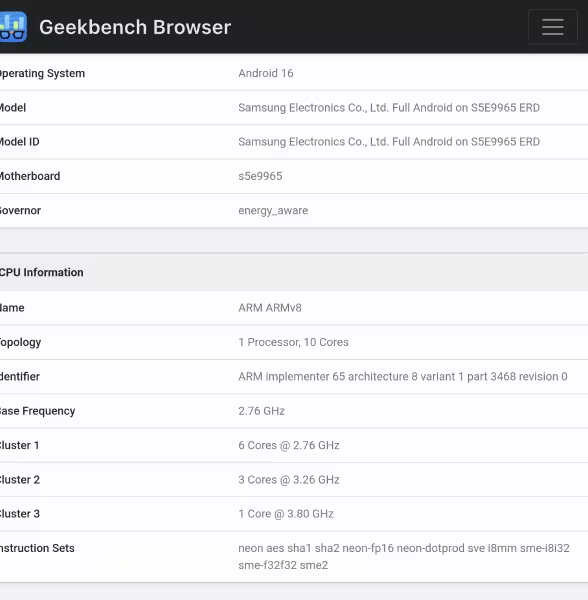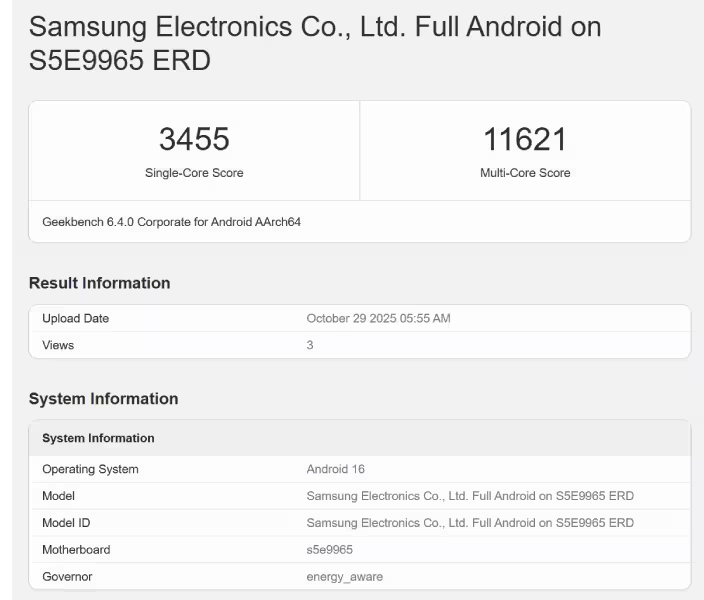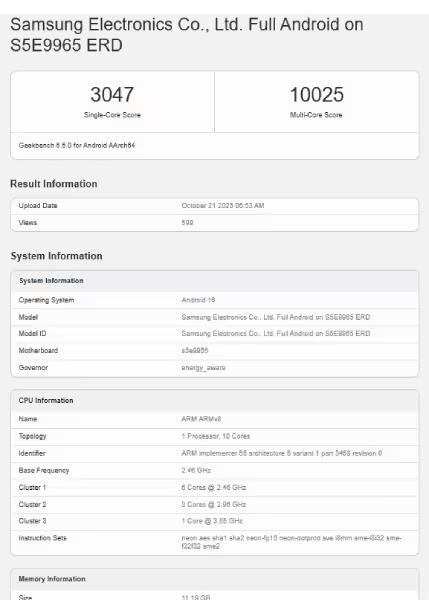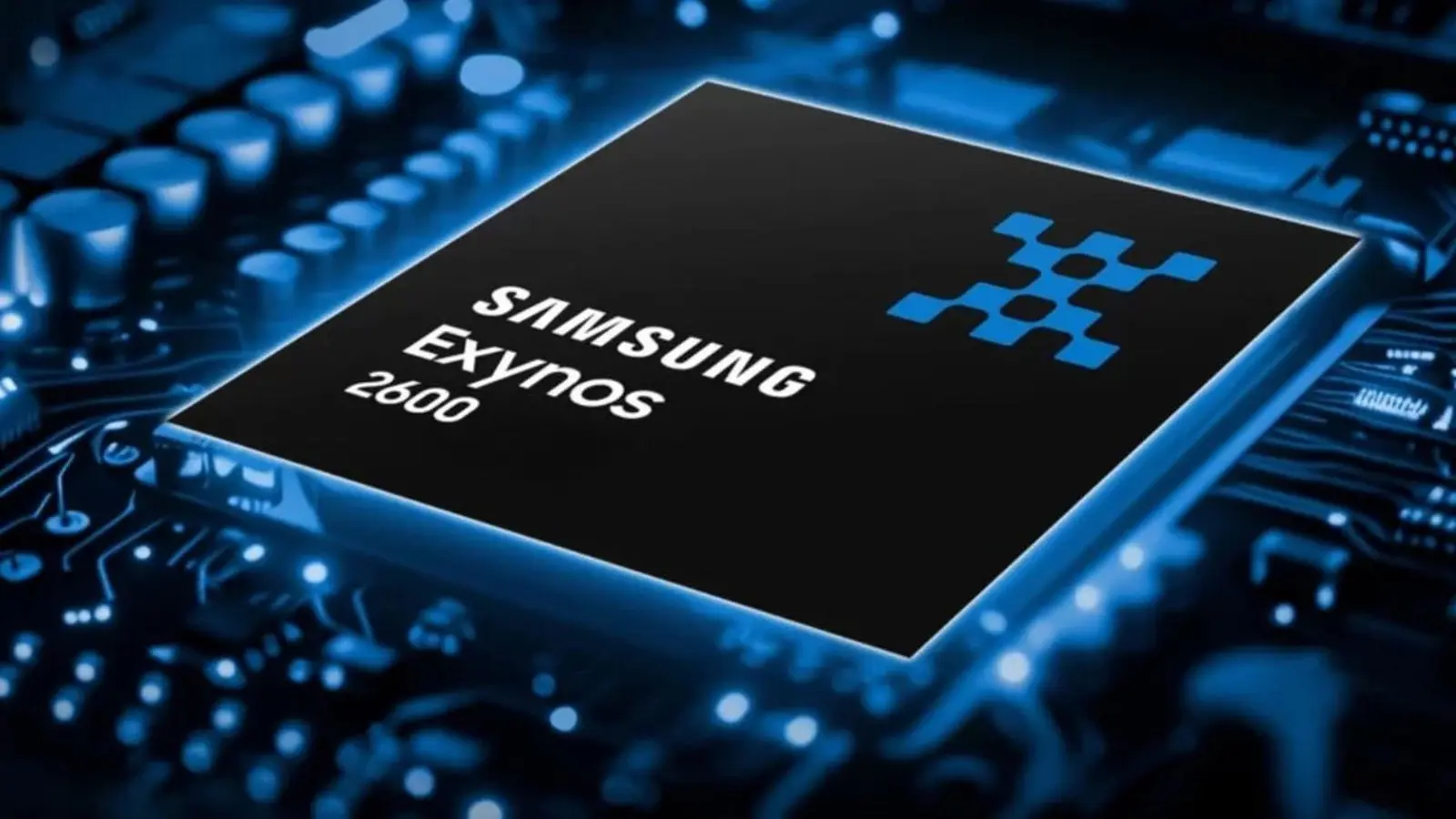3 Minutes
Samsung’s next flagship chipset, the Exynos 2600, has resurfaced on Geekbench with its strongest showing yet — and the numbers are raising questions about multiple configurations across the Galaxy S26 lineup.
What the new Geekbench run reveals
The latest benchmark listing posts 3,455 points in single-core and 11,621 in multi-core tests, an uptick from the chip’s August debut that scored 3,309 and 11,256 respectively. The CPU layout in both entries remains consistent: a prime Cortex-X930 core clocked at 3.8 GHz, three Cortex-A730 performance cores at 3.26 GHz, and six Cortex-A730S efficiency cores running at 2.76 GHz. The jump suggests Samsung has been tuning firmware or power delivery to coax more performance from the silicon.

How it stacks up against Qualcomm
For an immediate point of comparison, our Xiaomi 17 review unit powered by Qualcomm’s Snapdragon 8 Elite Gen 5 managed 3,078 single-core and 9,162 multi-core. On paper, the Exynos 2600 looks faster in synthetic testing. Keep in mind, though, that manufacturer test rigs and pre-production software often produce better numbers than retail phones will deliver.

Two chips, two identities?
Geekbench also recorded a lower-clocked Exynos 2600 variant last week, where the prime core ran at 3.55 GHz, the three performance cores at 2.96 GHz, and the six efficiency cores at 2.46 GHz. That build posted 3,047 single-core and 10,025 multi-core, a notably lower result. Industry whispers — amplified by outlets like SammyGuru — suggest Samsung could ship a higher-clocked model for the Galaxy S26 Ultra and use the pared-back version in the S26 and S26 Plus. It’s sensible from a product-segmentation standpoint: reserve peak silicon for the top-tier SKU while balancing thermals and battery life on the rest.
Why dual variants would matter
- Performance split: Ultra users could see a tangible speed edge in CPU-bound tasks and benchmarks.
- Thermals and battery: Lower-clocked chips may offer better sustained performance and longer battery life under heavy use.
- Marketing and price tiers: Different chips let Samsung differentiate features across models without redesigning the whole platform.

What to watch next
Benchmarks are a useful early indicator, but real-world performance depends on final firmware, thermal design, and power tuning inside finished phones. What matters now is a short list of follow-ups: independent reviews of retail Galaxy S26 units, third-party benchmarking under thermal stress, and official confirmations about which Exynos variant goes into each model.
Imagine unpacking an S26 Ultra and seeing benchmark headlines that mirror today’s numbers — or, conversely, a quieter story where the difference vanishes under sustained load. Either outcome will shape how Samsung’s in-house silicon is perceived against Qualcomm’s best.
For now, the Exynos 2600 looks promising on paper, and the possibility of two configurations gives Samsung flexibility — and us more reasons to pay attention when the S26 series reaches reviewers and buyers.
Source: gizmochina


Leave a Comment